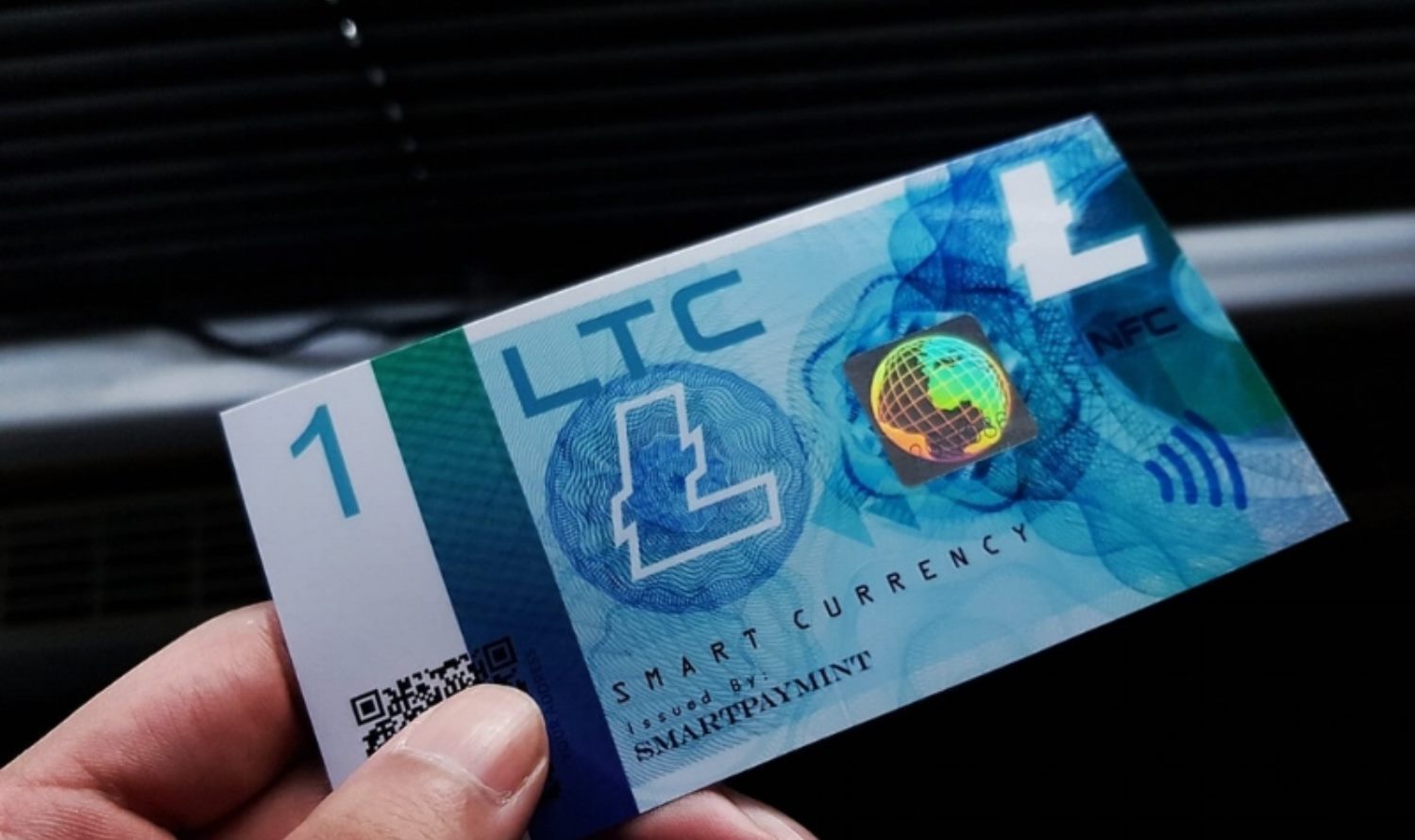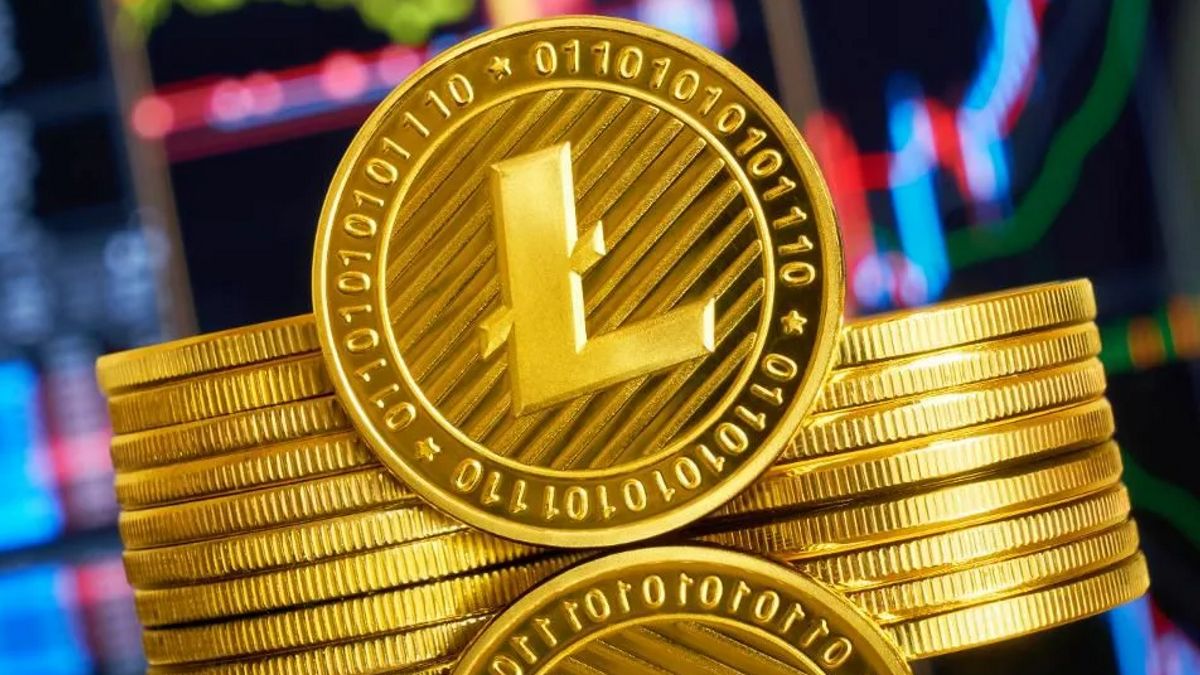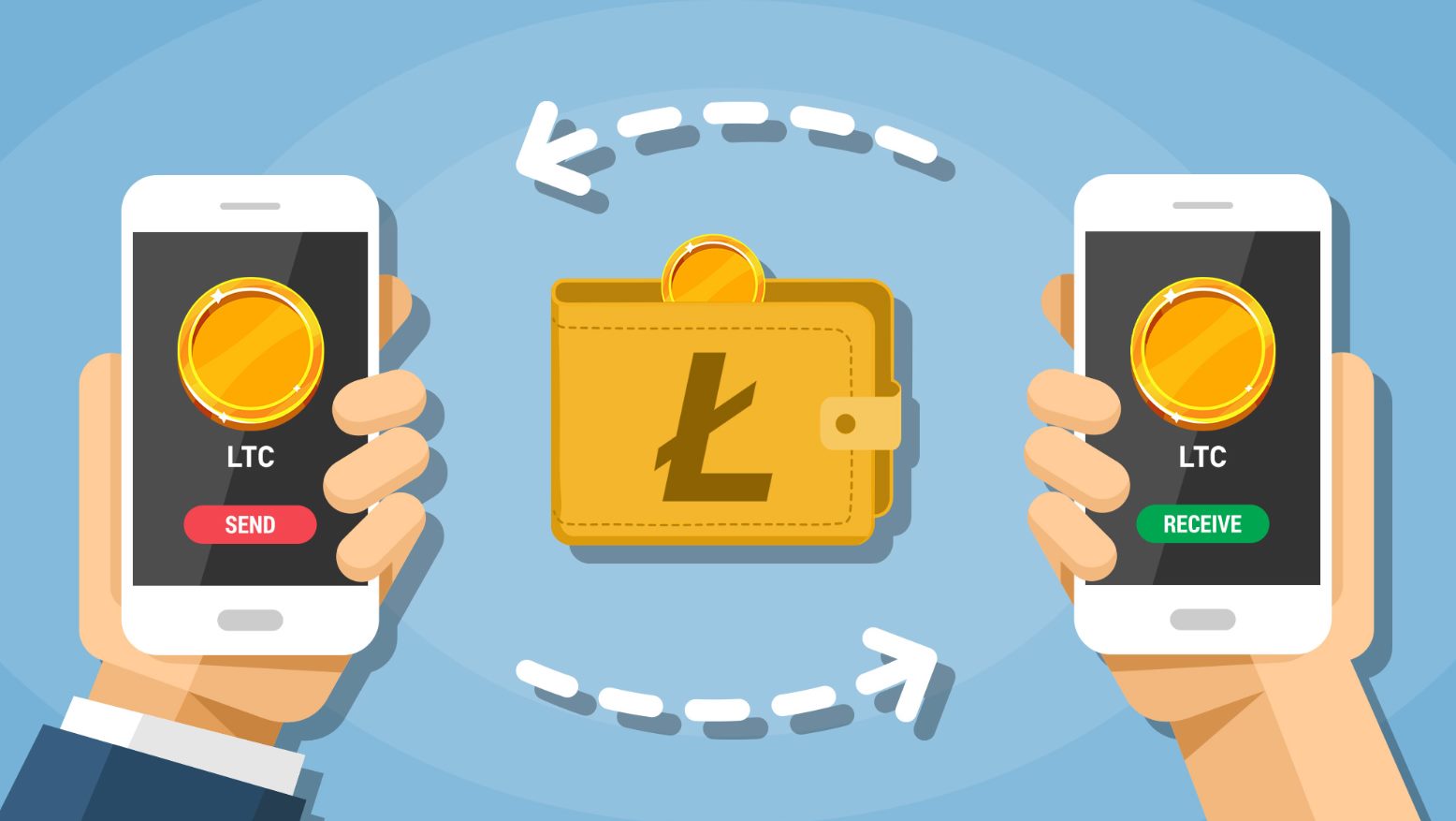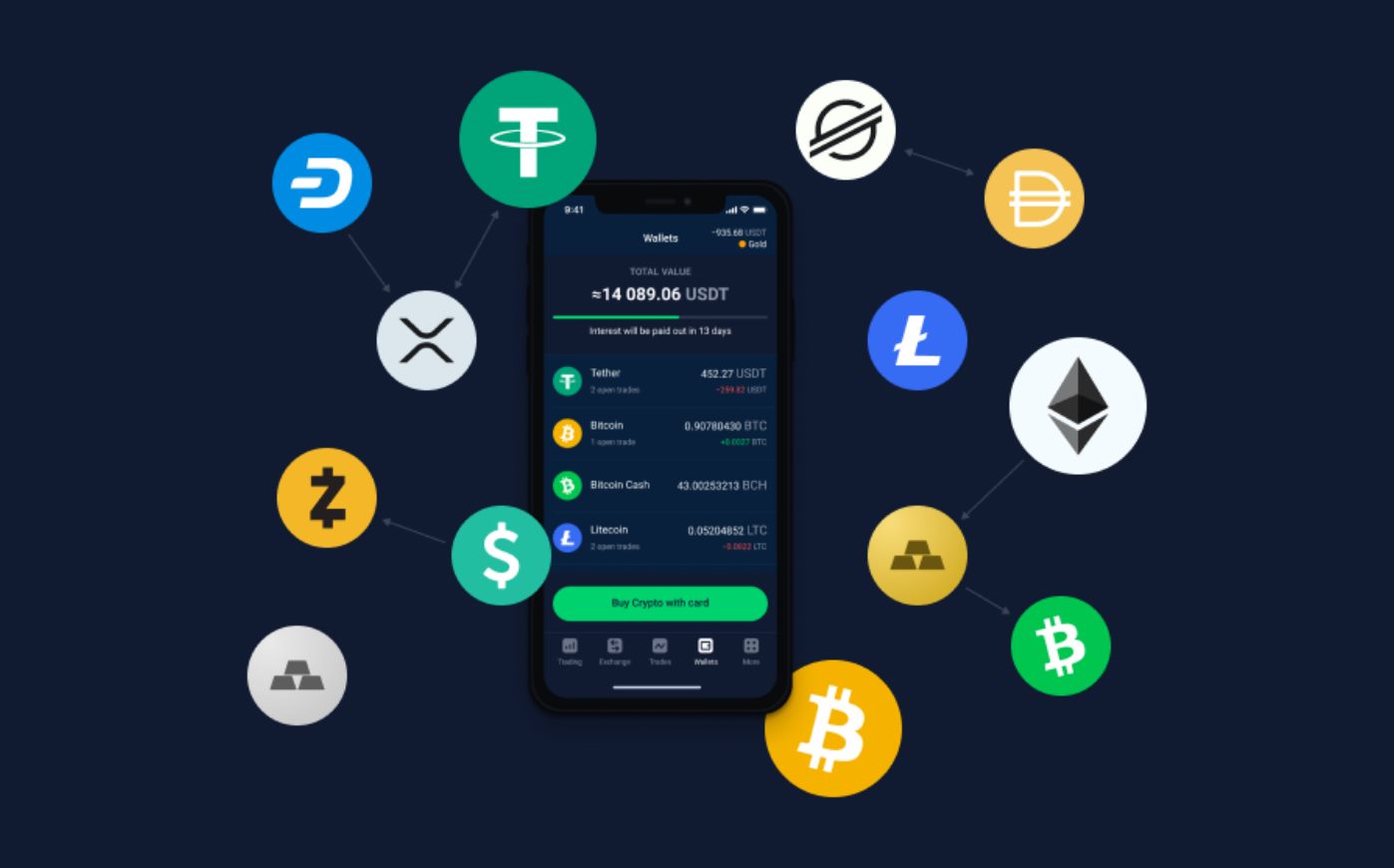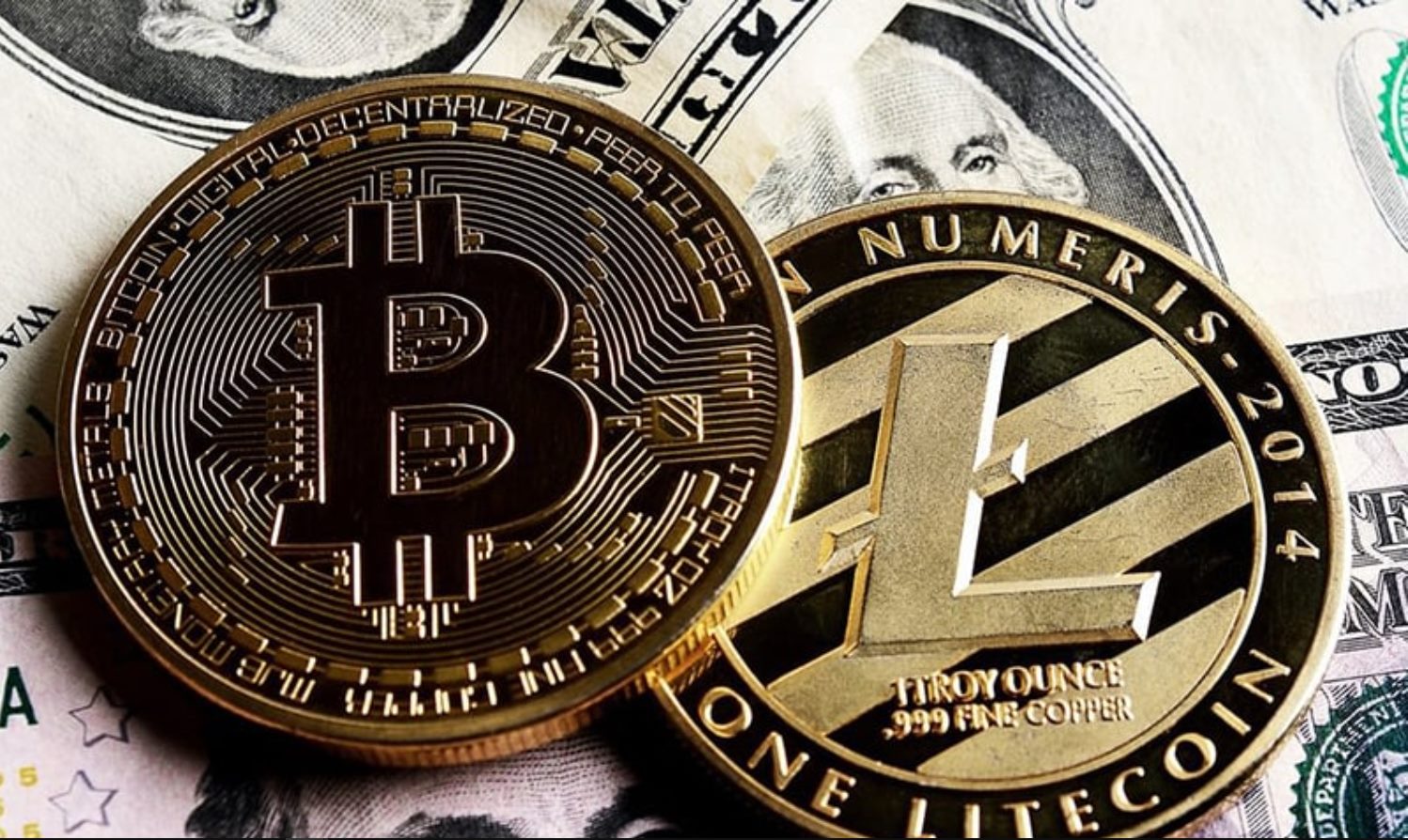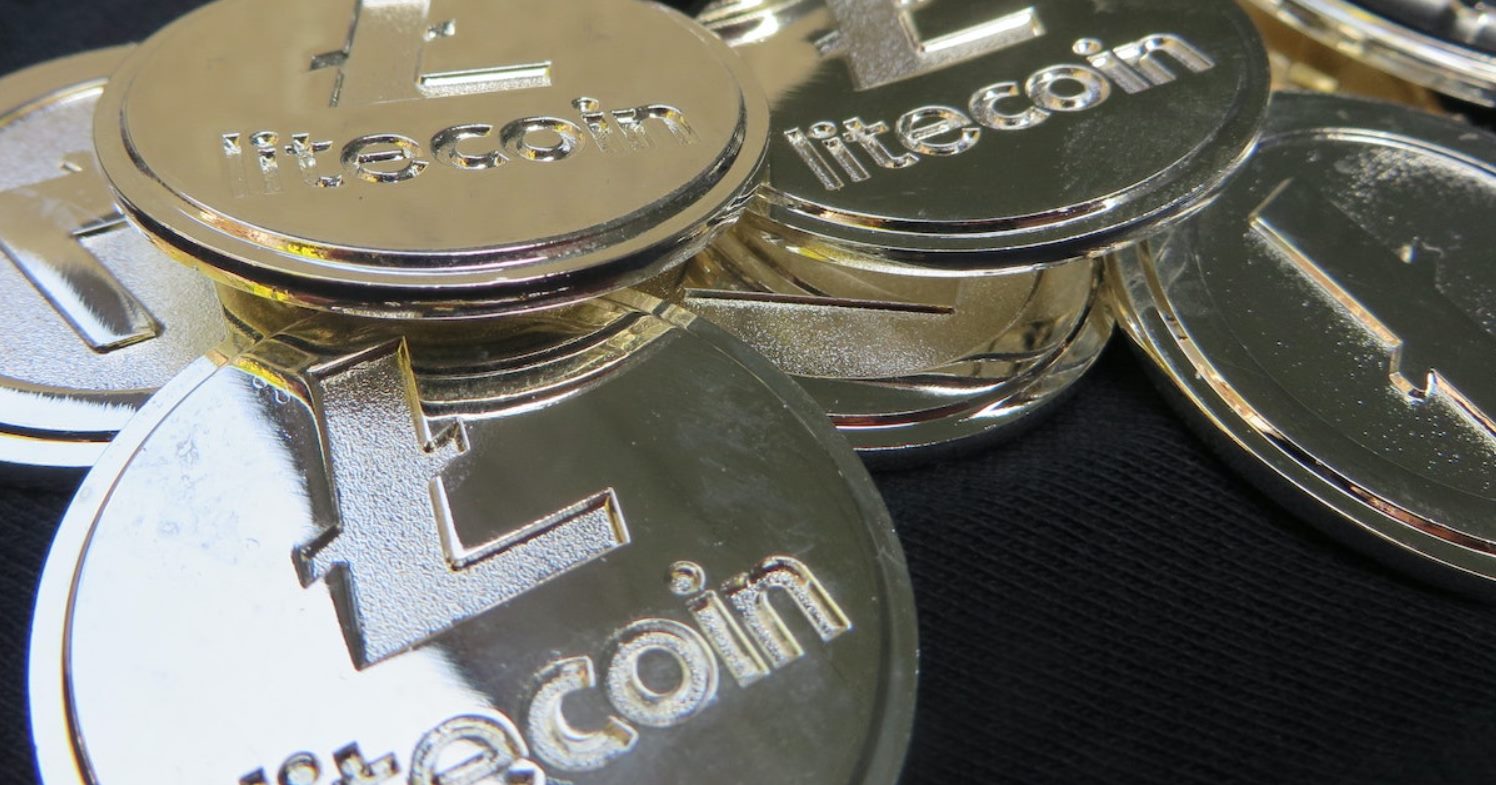What is a Litecoin Paper Wallet?
A Litecoin paper wallet is a physical document that contains the essential information needed to securely store Litecoin. It is called a “paper wallet” because the information is printed on a piece of paper. Unlike digital wallets, which store cryptocurrencies on electronic devices, paper wallets provide an offline, cold storage solution that is not susceptible to hacking or online threats.
A paper wallet consists of two key elements: a public address and a private key. The public address is a unique alphanumeric string that represents the destination for receiving Litecoin. It is safe to share the public address with others, as it is used to identify the wallet and receive funds. The private key, on the other hand, is a secret combination of characters that grants access to the funds stored in the paper wallet. It must be kept confidential and secure at all times to prevent unauthorized access to the funds.
Using a paper wallet offers several advantages. Firstly, it provides an extra layer of security as the private key is kept offline, mitigating the risk of cyber attacks. Secondly, it allows users to have complete control over their funds without relying on third-party custodial services. Lastly, it offers a secure long-term storage solution for those who wish to hold their Litecoin for an extended period.
It’s important to note that while paper wallets are considered highly secure, they are not immune to physical threats such as loss, theft, or damage. Therefore, it is crucial to take appropriate precautions when creating, storing, and using a Litecoin paper wallet. In the next section, we will explore how to generate a Litecoin paper wallet step by step.
Why Use a Litecoin Paper Wallet?
There are several reasons why using a Litecoin paper wallet is an attractive option for storing your Litecoin securely:
1. Enhanced Security: One of the main advantages of a paper wallet is its high level of security. Since the private key is stored offline, it is not vulnerable to online attacks or hacking attempts. This greatly reduces the risk of unauthorized access and ensures that your funds are safe.
2. Control Over Funds: With a paper wallet, you have complete control over your Litecoin. You don’t need to rely on third-party custodial services or online wallet providers. Owning the private key means you have the power to send, receive, and manage your funds without any intermediaries.
3. Long-Term Storage Solution: Paper wallets offer a secure and reliable long-term storage solution for your Litecoin. Unlike hardware wallets or software wallets, which can be more prone to malfunction or technological obsolescence, a paper wallet can be stored indefinitely and accessed at any time, even years down the line.
4. Protection Against Technical Failures: By storing your Litecoin offline in a paper wallet, you are safeguarded against technical failures in electronic devices. Hardware malfunctions, software bugs, and system crashes won’t affect your funds because they are securely printed on paper and not stored in a digital format.
5. Anonymity and Privacy: Using a paper wallet allows you to maintain a higher level of anonymity and privacy compared to online wallets. Since there is no personal information associated with a paper wallet, it is more difficult for your identity to be linked to your cryptocurrency holdings.
6. Back-up Option: Paper wallets can also serve as a back-up option for your cryptocurrency holdings. By printing multiple copies of your paper wallet and storing them securely in different locations, you can protect yourself against loss, theft, or damage to a single copy.
In summary, a Litecoin paper wallet provides enhanced security, complete control over your funds, a long-term storage solution, protection against technical failures, anonymity and privacy, and a back-up option. However, it’s important to remember the responsibility that comes with using a paper wallet. Safeguarding your private key and following proper storage practices are critical to ensure the security of your Litecoin. In the next section, we will guide you through the step-by-step process of generating a Litecoin paper wallet.
How to Generate a Litecoin Paper Wallet
Generating a Litecoin paper wallet involves a series of steps to ensure the security of your wallet and its contents. Follow the instructions outlined below to create your own Litecoin paper wallet:
Step 1: Prepare a Secure Environment
Find a trusted and secure environment for generating your paper wallet. Ensure that you are using a computer that is free from malware and viruses. Consider using a dedicated offline computer or a bootable operating system for added security.
Step 2: Download a Reliable Wallet Generator
Obtain a reliable wallet generator software or website. Look for reputable sources and ensure that the software has a history of being safe and reliable. Popular options for generating paper wallets include Litecoinaddress.org and Liteaddress.org.
Step 3: Disconnect from the Internet
Disable your internet connection to ensure that your private key information remains offline and protected from potential online threats.
Step 4: Generate a New Litecoin Address
Open the wallet generator and follow the instructions provided to generate a new Litecoin address. The software will create a public address and its corresponding private key. Make sure to store the private key securely and keep it confidential.
Step 5: Print the Wallet
Once your Litecoin address is generated, select the option to print the paper wallet. Use a secure printer and make sure that no unauthorized individuals have access to the printed copy. It is recommended to print multiple copies of the wallet for backup purposes.
Step 6: Store It Safely
Store your paper wallet(s) in a secure location that is resistant to fire, water damage, and theft. Consider using a secure safe, a safety deposit box, or a secure offline storage solution. It is important to keep the paper wallet protected to prevent unauthorized access to the funds.
Remember, the security of your paper wallet depends on how well you protect your private key and the physical copies of your wallet. Treat it like valuable cash or important documents and take proper precautions to ensure its safety.
Now that you have generated your Litecoin paper wallet, the next step is to fund it with Litecoin. In the following section, we will guide you through the process of funding your paper wallet.
Step 1: Prepare a Secure Environment
When it comes to generating a Litecoin paper wallet, ensuring a secure environment is paramount. Taking the necessary precautions during this step will help safeguard your private keys and protect your funds. Follow these guidelines to prepare a secure environment:
1. Use a Trusted Device: Start by choosing a computer or device that you trust and know to be free from malware, viruses, or keyloggers. It is recommended to use a dedicated offline computer or a bootable operating system for added security. This minimizes the risk of any potential compromise of your private keys during the wallet generation process.
2. Update Software and Antivirus: Make sure that your computer’s operating system, antivirus software, and any other security applications are up to date. Keeping your software patched and antivirus definitions current helps protect against any known vulnerabilities or malware.
3. Disconnect from the Internet: Before generating your paper wallet, ensure that you disconnect your computer from the internet. This step is crucial to prevent any potential online threats from intercepting or compromising your private keys. Disabling Wi-Fi, unplugging Ethernet cables, or putting your device in airplane mode will ensure a complete disconnection from the network.
4. Scan for Malware: Perform a thorough scan of your device using trusted and up-to-date antivirus software. This scan will help detect and remove any potential malware that may exist on your computer. It is essential to have a clean and secure environment for generating your paper wallet.
5. Avoid Public Networks: Generating a paper wallet on a public Wi-Fi network increases the risk of someone eavesdropping or intercepting your data. It is recommended to use your own secured network or a trusted wired connection to ensure the privacy and security of your sensitive information.
6. Minimize Physical Access: During the wallet generation process, ensure that no unauthorized individuals have physical access to your computer or the screen. This prevents anyone from potentially viewing or compromising your private keys. If necessary, find a private and secluded location to perform the generation process.
By following these precautions and preparing a secure environment, you can significantly reduce the risk of compromising your private keys or exposing your funds to potential threats. Taking the time to create a secure environment sets a foundation for the safe and successful generation of your Litecoin paper wallet.
Step 2: Download a Reliable Wallet Generator
Once you have prepared a secure environment, the next step in generating a Litecoin paper wallet is to download a reliable wallet generator software or website. It is crucial to choose a trustworthy source to ensure the integrity and security of your paper wallet. Follow these guidelines to download a reliable wallet generator:
1. Research Trusted Sources: Start by conducting thorough research to identify reputable sources for wallet generators. Look for well-known software or trusted websites that have a history of being safe and reliable. Read reviews and seek recommendations from trusted sources in the cryptocurrency community.
2. Open-Source Solutions: Consider using open-source wallet generator software. Open-source projects allow for transparency and the review of code by the community, reducing the risk of hidden vulnerabilities or malicious intent. Popular open-source wallet generator options include Litecoinaddress.org and Liteaddress.org.
3. Verify Authenticity: Before downloading any wallet generator, ensure that you are on the official website or downloading from a legitimate source. Be cautious of copycat websites or unofficial links that may distribute compromised software. Double-check the URL, verify the website’s SSL certificate, and compare it to official sources.
4. Check Developer Reputation: Look into the reputation and credibility of the developer behind the wallet generator software. Trusted developers often have a track record in the cryptocurrency community and are known for their commitment to security and privacy. Research the developer’s history and contributions to the community.
5. Community Recommendations: Seek out recommendations from reputable members of the cryptocurrency community, such as well-known developers or security experts. Their insights and recommendations can help guide you towards trusted wallet generator options and ensure a safer experience.
6. Current Software Version: Ensure that you are downloading the latest version of the wallet generator software. Developers regularly release updates to address vulnerabilities and improve security. Using an outdated version of the software may expose you to unnecessary risks.
7. Verify File Integrity: Once you have downloaded the wallet generator software, verify the file’s integrity. Compare the file’s hash or checksum with the one provided by the official source. This step helps ensure that the software has not been tampered with or modified during the download process.
By following these guidelines and downloading a reliable wallet generator software or website, you can minimize the risk of using compromised or malicious applications. Taking the time to research and choose trusted sources is crucial for the security and integrity of your Litecoin paper wallet.
Step 3: Disconnect from the Internet
Once you have downloaded a reliable wallet generator, it is vital to disconnect your computer from the internet before proceeding with generating your Litecoin paper wallet. This step ensures that your private keys are kept offline and protects them from potential online threats. Follow these steps to disconnect from the internet:
1. Disable Wi-Fi: Turn off the Wi-Fi connection on your computer or device. This action prevents any potential wireless network vulnerabilities from being exploited by hackers or malware.
2. Unplug Ethernet Cable: If your computer is connected to the internet via an Ethernet cable, unplug it to sever the connection. This step physically disconnects your device from the network.
3. Enable Airplane Mode: If you are using a laptop or mobile device, activate airplane mode or a similar setting that disables all wireless connections. This step ensures that no data can be transmitted or received through any wireless networks.
4. Disable Bluetooth: If your device has Bluetooth capabilities, ensure that it is turned off. Bluetooth connections can potentially be exploited by attackers, so disabling it further enhances the security of your isolated environment.
5. Double-Check Connectivity: After taking these steps, go to the network settings on your device and verify that all wireless and wired connections are effectively disabled. Ensure that there are no active network connections.
6. Stay Disconnected: Throughout the entirety of the wallet generation process, it is crucial to remain disconnected from the internet. Even a momentary lapse in connectivity can present an opportunity for malicious actors to compromise your private keys.
By disconnecting from the internet, you create a secure and isolated environment for generating your Litecoin paper wallet. This step ensures that your private keys are kept strictly offline, minimizing the risk of them being intercepted or compromised by online threats. It is important to maintain this disconnection until you have completed the entire wallet generation process. In the next section, we will guide you through the process of generating a new Litecoin address.
Step 4: Generate a New Litecoin Address
With a secure environment and disconnected internet connection, you are ready to generate a new Litecoin address for your paper wallet. This step involves using the trusted wallet generator software or website you downloaded in the previous step. Follow these guidelines to generate a new Litecoin address:
1. Open the Wallet Generator: Launch the wallet generator software or access the website you downloaded. Make sure that you are using the correct software and that it is from a trusted source. Verify the authenticity and integrity of the wallet generator before proceeding.
2. Follow the Instructions: The wallet generator will provide step-by-step instructions on how to generate a new Litecoin address. Carefully read and follow the instructions provided to ensure the successful creation of your paper wallet.
3. Generate the Address: Within the wallet generator, there will be an option to generate a new Litecoin address. Click on the appropriate button or follow the designated process to create a fresh address specific to your paper wallet.
4. Store the Private Key: As a part of the address generation process, you will also be provided with a private key. This key is essential for accessing and managing the funds associated with your Litecoin address. Ensure that you securely store the private key and keep it confidential.
5. Record the Public Address: The wallet generator will display the public address associated with your newly generated Litecoin paper wallet. This alphanumeric string serves as the destination for receiving Litecoin. Record the public address accurately and securely. It is safe to share the public address with others as it is used for identifying your wallet and receiving funds.
6. Optional: Generate Multiple Addresses: Some wallet generators offer the option to generate multiple Litecoin addresses at once. This feature allows you to create additional addresses for future use or backup purposes. Consider using this function for added convenience and security.
By following these guidelines and generating a new Litecoin address using a trusted wallet generator, you can create a secure and unique address for your paper wallet. Ensure that you record and store both the private key and public address in a safe and confidential manner. In the next step, we will guide you through printing your paper wallet and storing it securely.
Step 5: Print the Wallet
Once you have generated a new Litecoin address for your paper wallet, the next step is to print the wallet. Printing the wallet allows you to have a physical copy of your Litecoin address and private key. Follow these steps to ensure a successful printing process:
1. Prepare a Printer: Make sure you have access to a printer that is connected to your secure computer. Ensure that the printer is functioning properly and has enough ink or toner to produce a legible printout.
2. Choose a Printing Option: Within the wallet generator software or website, there should be an option to print the wallet. Look for a “Print” button or a similar command and select it to initiate the printing process.
3. Check Print Settings: Before proceeding with the printout, double-check the print settings. Ensure that the paper size is appropriate for the document and that the printer setup aligns with your preferences. Consider using a high-quality printing setting for better readability.
4. Print Multiple Copies: For added security and redundancy, consider printing multiple copies of your paper wallet. Having backups ensures that you have alternative copies in case of loss, theft, or damage to the original printout. Keep track of the number of copies and store them securely.
5. Verify the Legibility: After printing, carefully examine the printed wallet. Ensure that the text, public address, and private key are all legible and clearly printed. Confirm that there are no smudges, faint characters, or any other printing irregularities that may hinder readability.
6. Keep it Private: Once you have the printed wallet, ensure its privacy and confidentiality. Avoid sharing your private key and keep it well-guarded. Store the printed wallets in a secure location, away from prying eyes and potential threats.
7. Beware of Printer Memory: Some printers have internal memory that saves a copy of what has been printed. Be aware of this potential risk and ensure that the printer memory is cleared after printing your paper wallet. Consult the printer’s manual or settings for guidance on clearing the memory.
By following these steps, you can successfully print your Litecoin paper wallet. Ensure that the printed copy is clear, accurately displays your Litecoin address and private key, and you have multiple copies stored securely. Remember to handle the printed wallets with care, treat them like valuable documents, and store them in a safe and inaccessible place.
Step 6: Store It Safely
Once you have printed your Litecoin paper wallet, it is crucial to store it safely to protect your funds from loss, theft, or damage. Follow these guidelines to ensure the secure storage of your paper wallet:
1. Choose a Secure Location: Select a secure and discreet location to store your paper wallet. Consider options such as a personal safe, a safety deposit box at a bank, or a secure offline storage solution. The goal is to keep it protected from physical threats like fire, water damage, or unauthorized access.
2. Use Protective Measures: To protect your paper wallet from wear and tear, consider using protective measures. Encasing the paper wallet in a laminating pouch or placing it inside a tamper-evident envelope can help keep it safe from physical damage or tampering.
3. Store Multiple Copies: It is advisable to create multiple copies of your paper wallet and store them in separate secure locations. This provides redundancy and protects against the potential loss or damage of a single copy. Keep track of the number of copies and ensure they are all stored safely.
4. Minimize Exposure: Limit unnecessary exposure of your paper wallet. Avoid sharing the private key or publicly displaying the wallet’s information. The more discreetly you handle and store your paper wallet, the better you protect your funds from potential threats.
5. Keep it Private: Treat the private key of your paper wallet with the utmost privacy. Do not share it with anyone and make sure it remains confidential. The private key grants access to the funds stored in the wallet, so keeping it secure is essential to protect your Litecoin.
6. Regularly Check for Damage: Periodically inspect your stored paper wallet for any signs of damage. Check for tears, discoloration, or any other issues that may compromise the integrity of the wallet. If you notice any damage, consider creating a new paper wallet and transferring your funds to the new address.
7. Have a Recovery Plan: In the event of loss or damage to your paper wallet, it is crucial to have a recovery plan in place. This may involve creating additional paper wallets, using digital backups, or transferring the funds to a hardware wallet or secure software wallet. Familiarize yourself with recovery procedures and explore backup options for your funds.
By following these guidelines and storing your paper wallet safely, you can enhance the security and longevity of your Litecoin funds. Remember to keep the private key confidential, regularly check for any damage, and have a backup plan in case of emergencies. Safeguarding your paper wallet is essential for protecting your hard-earned Litecoin.
How to Fund a Litecoin Paper Wallet
Once you have successfully generated and securely stored your Litecoin paper wallet, the next step is to fund it with Litecoin. Funding your paper wallet involves sending Litecoin to the public address associated with your wallet. Follow these steps to fund your Litecoin paper wallet:
Step 1: Obtain Litecoin
The first step is to obtain Litecoin that you can send to your paper wallet. You can acquire Litecoin through various methods, such as purchasing it from a cryptocurrency exchange, receiving it from someone else, or mining it. Ensure that you have enough Litecoin to fund your wallet according to your desired balance.
Step 2: Send Litecoin to the Paper Wallet
Once you have obtained Litecoin, you can proceed to send it to your paper wallet. This process involves initiating a transaction from your cryptocurrency exchange account or software wallet to the public address of your paper wallet. Follow the instructions provided by your wallet or exchange to send the Litecoin funds to your paper wallet’s public address.
Step 3: Verify the Funds
After sending the Litecoin to your paper wallet, it is important to verify that the transaction was successful and the funds have arrived. You can check the status of the transaction and the balance of your paper wallet by using a Litecoin blockchain explorer or a software wallet that allows you to import the paper wallet’s public address.
It is important to note that even though the funds are stored in the paper wallet, the private key associated with the wallet is needed to access and manage the funds in the future. Ensure that you keep the private key confidential and securely stored.
By following these steps, you can successfully fund your Litecoin paper wallet and securely store your Litecoin. It is important to maintain proper security practices and regularly backup the private key of your paper wallet to ensure the safety of your funds. In the next section, we will explore how to use your Litecoin paper wallet for transactions.
Step 1: Obtain Litecoin
The first step in funding your Litecoin paper wallet is to obtain Litecoin. Litecoin can be acquired through different methods, depending on your preference and availability. Here are some common ways to obtain Litecoin:
1. Purchase from a Cryptocurrency Exchange: One of the most straightforward ways to obtain Litecoin is to purchase it from a reputable cryptocurrency exchange. Choose a trusted exchange that supports Litecoin and create an account. Then, deposit funds into your account using a bank transfer or another supported payment method. Once your account is funded, you can buy Litecoin from the exchange at the current market price.
2. Receive Litecoin from Others: Another way to obtain Litecoin is to receive it from someone else. You can receive Litecoin as payment for goods or services, or you can request Litecoin from friends, family, or other individuals who hold Litecoin. They can send the Litecoin directly to your paper wallet’s public address or another wallet address you provide.
3. Mining Litecoin: If you have the technical knowledge and equipment, you can mine Litecoin. Mining involves using specialized hardware to validate transactions and secure the Litecoin network. Successful mining rewards miners with newly minted Litecoin. However, mining has become more resource-intensive over time, requiring significant computational power and energy consumption.
4. Litecoin Faucets: Litecoin faucets are websites or applications that dispense small amounts of Litecoin to visitors. These faucets typically require completing simple tasks, such as solving captchas or viewing advertisements. While the amounts earned from faucets are small, they can add up over time.
5. Peer-to-Peer Trading: Peer-to-peer (P2P) trading platforms connect buyers and sellers directly, allowing you to purchase Litecoin from other individuals. These platforms facilitate secure transactions and provide a wide range of payment options. However, exercise caution and use reputable P2P platforms to minimize the risk of scams.
When obtaining Litecoin, consider the current exchange rate, transaction fees, and the reputation and security measures of the platforms or individuals you are working with. Conduct thorough research and choose reliable methods to ensure the legitimacy and safety of your transactions. Keep in mind that the availability and viability of each method may vary depending on your location and local regulations.
By obtaining Litecoin through trusted sources, you can ensure that the funds you receive are legitimate and ready to be sent to your Litecoin paper wallet. In the next step, we will guide you through the process of sending Litecoin to your paper wallet.
Step 2: Send Litecoin to the Paper Wallet
After obtaining Litecoin, the next step in funding your paper wallet is to send the cryptocurrency to the public address associated with your wallet. This process involves transferring the desired amount of Litecoin from your account or another wallet to your paper wallet. Follow these steps to send Litecoin to your paper wallet:
1. Choose a Wallet or Exchange: Decide on the wallet or exchange platform you will use to initiate the transaction. Ensure that the platform supports Litecoin and enables you to send funds to an external wallet address. If you are using a software wallet or a hardware wallet, make sure it allows you to import or sweep private keys.
2. Access Your Wallet: Open the wallet or exchange platform you selected and log into your account. Make sure you have the necessary credentials, such as your username and password, to access the account.
3. Locate the Send/Withdraw Option: Based on the wallet or exchange platform you are using, find the option to send or withdraw funds. This may be labeled as “Send,” “Withdraw,” or a similar term. Click on this option to initiate the transaction.
4. Enter the Paper Wallet’s Public Address: In the designated field, enter the public address associated with your paper wallet. This is the alphanumeric string unique to your wallet, and it is where you want to receive the Litecoin. Double-check the address to ensure accuracy, as any mistakes can lead to the loss of funds.
5. Specify the Amount and Confirm: Enter the desired amount of Litecoin you wish to send to your paper wallet. Ensure that you have sufficient funds in your account to cover the transaction and any associated fees. Verify the transaction details, such as the recipient address and the amount, before confirming the transfer.
6. Authenticate the Transaction: Depending on the wallet or exchange platform, you may need to provide additional authentication, such as entering a verification code or authorizing the transaction using two-factor authentication. Follow the platform’s instructions to complete the authentication process.
7. Review and Submit the Transaction: Before finalizing the transaction, carefully review all the details, including the recipient’s address and the transaction fee. Once you are confident that the information is correct, submit the transaction to initiate the transfer of Litecoin from your account to your paper wallet.
After completing these steps, the funds should be sent from your wallet or exchange account to the public address of your paper wallet. The transaction may take some time to be confirmed on the Litecoin blockchain, so be patient. You can track the progress of the transaction using a Litecoin blockchain explorer or by checking the transaction history on your wallet or exchange platform.
By following these steps, you can successfully send Litecoin to your paper wallet and securely store your funds offline. Remember to keep your private key confidential and regularly backup your paper wallet to ensure the safety of your Litecoin holdings.
Step 3: Verify the Funds
After sending Litecoin to your paper wallet, it is essential to verify that the transaction was successful and confirm that the funds have been successfully deposited. Verification is crucial to ensure the accuracy and integrity of the transaction. Follow these steps to verify the funds in your paper wallet:
1. Access a Litecoin Blockchain Explorer: Use a Litecoin blockchain explorer, such as blockchair.com or chainz.cryptoid.info, to track the transaction and check the status of your paper wallet’s balance. A blockchain explorer allows you to view all transactions recorded on the Litecoin blockchain.
2. Locate Your Paper Wallet Address: Find the public address associated with your paper wallet. This is the address to which you sent the Litecoin. It should be available either on your paper wallet itself or in the records of your wallet or exchange platform from which you made the transaction.
3. Search for the Public Address: Enter the public address of your paper wallet into the search bar of the blockchain explorer. The explorer will display the transaction history associated with that address, including the recent transaction you made to fund the wallet.
4. Verify Transaction Details: Confirm that the transaction is listed and corresponds to the amount of Litecoin you sent to your paper wallet. Pay attention to transaction confirmations, as it may take some time for the transaction to be included in a block and confirmed by the network.
5. Check Available Balance: Take note of the current balance displayed for your paper wallet’s public address. This balance should reflect the amount of Litecoin you sent to the wallet. Ensure that it matches your expectations and confirms that the funds are indeed present in your paper wallet.
6. Keep Record of Confirmation: Take a screenshot or save the transaction details from the blockchain explorer for future reference and as proof of the successful deposit. This documentation can be useful in case of any disputes or to track the progress of your Litecoin holdings.
Verifying the funds in your paper wallet provides peace of mind and confirms that your Litecoin has been securely deposited. It is essential to regularly check the balance or review the transaction history if you make subsequent deposits to your paper wallet.
Remember that while the funds are stored within your paper wallet, it is crucial to keep the private key associated with the wallet secure and confidential. Safeguarding your private key ensures that you have exclusive access to your funds and prevents unauthorized individuals from accessing them.
By following these steps and verifying the funds, you can have confidence in the successful deposit of your Litecoin to your paper wallet. This step is essential for maintaining accurate records and ensuring the security of your cryptocurrency holdings.
How to Use a Litecoin Paper Wallet
Using a Litecoin paper wallet involves importing and managing the funds stored in the wallet. The process requires careful attention to security measures to protect your private key. Follow these steps to effectively use your Litecoin paper wallet:
Step 1: Start by Importing the Wallet
To use a Litecoin paper wallet, you will need to import it into a software or hardware wallet that supports importing private keys. Most Litecoin wallets have an option to import a private key, allowing you to access the funds associated with your paper wallet. Follow the instructions provided by your chosen wallet to import the private key securely.
Step 2: Check the Balance
Once you have imported the paper wallet, verify the balance by checking the wallet’s balance in your chosen software or hardware wallet. This balance should correspond to the amount of Litecoin stored in your paper wallet. Confirming the balance ensures the successful import of your funds.
Step 3: Use the Paper Wallet for Transactions
With your Litecoin paper wallet imported and the balance confirmed, you can now use the wallet for transactions. You can send Litecoin from the paper wallet to other wallet addresses by using the send or transfer function provided by your wallet software or hardware device. When making transactions, ensure that you carefully enter the recipient’s address and verify the details before confirming the transaction.
When using a paper wallet, keep the following in mind:
1. Security Measures: Always take precautions to protect your private key and funds. Keep your imported wallet secure and ensure that your computer and wallet software are free from malware or any potential security threats.
2. Backup and Recovery: It is crucial to create backups of your imported wallet, including the private key and any associated passwords. Regularly back up your wallet to protect against loss of funds in case of hardware or software failure.
3. Secure Storage: After importing your paper wallet, securely store the physical copy of the paper wallet, since it contains the private key. Protect it from theft, damage, or unauthorized access. Consider using a safe, safety deposit box, or other secure offline storage options.
4. Regularly Verify and Update: Continuously monitor your imported wallet’s balance and verify transactions to ensure accuracy and security. Keep your wallet software and hardware device up to date with the latest security patches to minimize any potential vulnerabilities.
By following these steps and incorporating proper security measures, you can effectively use your Litecoin paper wallet for transactions and securely manage your Litecoin funds. Remember to exercise caution, stay updated on best practices, and regularly back up and secure your wallet to ensure the safety of your cryptocurrency holdings.
Step 1: Start by Importing the Wallet
To use a Litecoin paper wallet, the first step is to import it into a software or hardware wallet that supports importing private keys. Importing the wallet allows you to access and manage the funds stored in the paper wallet. Follow these steps to import your Litecoin paper wallet:
1. Choose a Compatible Wallet: Start by selecting a software or hardware wallet that supports the import of private keys. Ensure that the wallet is compatible with Litecoin and offers a secure and user-friendly interface. Popular options include Litecoin Core, Electrum-LTC, Ledger Live, or Trezor Wallet.
2. Launch the Wallet: Install and open the chosen wallet software or connect your hardware wallet to your computer. Ensure that your wallet is properly set up and functioning before proceeding with the import process.
3. Locate the Import or Add Wallet Option: Within the wallet software, look for the option to import or add a wallet. This option is typically found in the wallet settings, preferences, or in the “Wallets” section. Follow the instructions provided by your specific wallet software to proceed.
4. Locate the Private Key: Locate the private key of your paper wallet. This is typically a long string of alphanumeric characters, either in text or QR code form. It contains the information necessary to access and control the funds stored in the paper wallet.
5. Scan or Enter the Private Key: Depending on your wallet software, you may have the option to either scan the QR code of the private key or manually enter it. If scanning the QR code, use the wallet’s scanner function to capture the private key. If entering manually, carefully type in the entire private key.
6. Confirm and Validate the Import: Once the private key is scanned or entered, the wallet software will validate and verify the key. This process ensures the accuracy and integrity of the imported wallet. Follow any prompts or procedures provided by the wallet software to confirm the import.
7. Wait for Synchronization: After confirming the import, the wallet software will synchronize with the Litecoin blockchain to fetch the transaction history and balance associated with the imported wallet. Depending on the wallet software and network conditions, it may take some time for the synchronization to complete.
By following these steps, you can successfully import your Litecoin paper wallet into a software or hardware wallet. Once imported, you can access the funds stored in the paper wallet and perform various transactions, such as sending or receiving Litecoin. Remember to keep your private key confidential and securely stored, as it provides access to your funds.
Step 2: Check the Balance
After importing your Litecoin paper wallet into a software or hardware wallet, it is crucial to check the balance associated with your imported wallet. Verifying the balance allows you to ensure that the funds from your paper wallet have been successfully imported. Follow these steps to check the balance of your imported wallet:
1. Open Your Wallet: Launch the software or connect your hardware wallet and access the interface. Ensure that you have successfully imported your paper wallet and can view it within the wallet software.
2. Locate the Imported Wallet: In the wallet software, locate and select the wallet that you have imported. It should be listed among your other wallet options, and its name or identifier should correspond to the imported paper wallet.
3. View the Wallet Balance: Once you have selected the imported wallet, navigate to the balance or overview section in the wallet software. Here, you should be able to see the current balance associated with the imported wallet.
4. Confirm the Balance: Check the displayed balance against your expectations and any previous records of the amount you held in the paper wallet. Ensure that the balance includes the funds from the paper wallet and accurately reflects the total amount of Litecoin imported.
5. Check for Transactions: In addition to the balance, verify that the wallet software shows the transaction history associated with the imported wallet. This will include any past transactions involving the imported wallet.
6. Verify External Confirmation: If you have access to a Litecoin blockchain explorer, you can cross-reference the balance displayed in your wallet software with the recorded balance on the blockchain. Use the public address associated with your imported wallet to search for transactions and confirm the accuracy of the balance.
By following these steps, you can effectively check the balance of your imported Litecoin paper wallet. Verifying the balance ensures that the funds from your paper wallet have been successfully imported into your software or hardware wallet. It is crucial to regularly monitor the balance and update your records as you perform transactions or interact with your Litecoin holdings.
Step 3: Use the Paper Wallet for Transactions
Once you have imported your Litecoin paper wallet into a software or hardware wallet, you can utilize it for various transactions. Using a paper wallet allows you to send and receive Litecoin securely. Follow these steps to effectively use your paper wallet for transactions:
1. Sending Litecoin: To send Litecoin from your paper wallet, navigate to the “Send” or “Transfer” section of your wallet software. Enter the recipient’s Litecoin address, which can be either a paper wallet address or an address from another wallet. Specify the amount you want to send and review the transaction details before confirming the transfer.
2. Receiving Litecoin: To receive Litecoin in your paper wallet, share your paper wallet’s public address with the sender. Double-check the address to ensure its accuracy. Once the sender initiates the transaction and it is confirmed on the blockchain, the Litecoin will be credited to your paper wallet’s address.
3. Transaction Verification: After completing a transaction, verify it by checking the transaction history in your wallet software. Confirm that the transaction appears in the transaction list and matches the details of your transaction.
4. Backup Private Keys: Regularly back up your imported wallet’s private keys and store them securely. This ensures that you have a backup in case of any unexpected events or hardware failures.
5. Stay Informed: Stay updated with the latest security practices and news related to cryptocurrencies. Stay vigilant and be aware of potential threats or phishing attempts that could compromise the security of your paper wallet.
6. Keep Your Paper Wallet Secure: Although you have imported your paper wallet, keep the physical copy of your paper wallet secure. Store it in a safe and protected place to prevent unauthorized access or damage.
Remember to exercise caution and verify the addresses before initiating any transactions. Mistakes in entering the recipient’s address can result in the loss of funds.
By following these steps and using your paper wallet for transactions, you can leverage the security of your paper wallet while actively engaging in transactions with Litecoin. Keep track of your transaction history and stay proactive in terms of security measures to safeguard your funds.
Conclusion
Setting up and using a Litecoin paper wallet provides a secure and offline storage solution for your Litecoin holdings. By following the steps outlined in this guide, you can generate a paper wallet, fund it with Litecoin, and use it for transactions. Here’s a recap of the key steps:
In the first step, you learned how to generate a Litecoin paper wallet in a secure environment by downloading a reliable wallet generator. Then, you disconnected from the internet to protect your private keys. Next, you generated a new Litecoin address and printed the wallet, ensuring it was stored securely.
After obtaining Litecoin, you sent it to the public address of your paper wallet, and then verified the transaction using a blockchain explorer to ensure the funds were successfully transferred.
To start using your Litecoin paper wallet, you imported it into a compatible software or hardware wallet. You checked the balance to confirm the funds were imported correctly. Lastly, you learned how to use the paper wallet for transactions while keeping security measures in mind.
Remember, security is paramount when using a paper wallet. Safeguard your private keys, regularly check for transaction activity, and store your paper wallet in a secure location.
Using a Litecoin paper wallet offers enhanced security and control over your funds. However, it’s essential to stay informed about the latest security practices and keep your wallet software up to date.
With the steps and information provided in this guide, you’re now equipped to create, fund, and use a Litecoin paper wallet. Enjoy the security and peace of mind that come with owning and managing your Litecoin offline.







